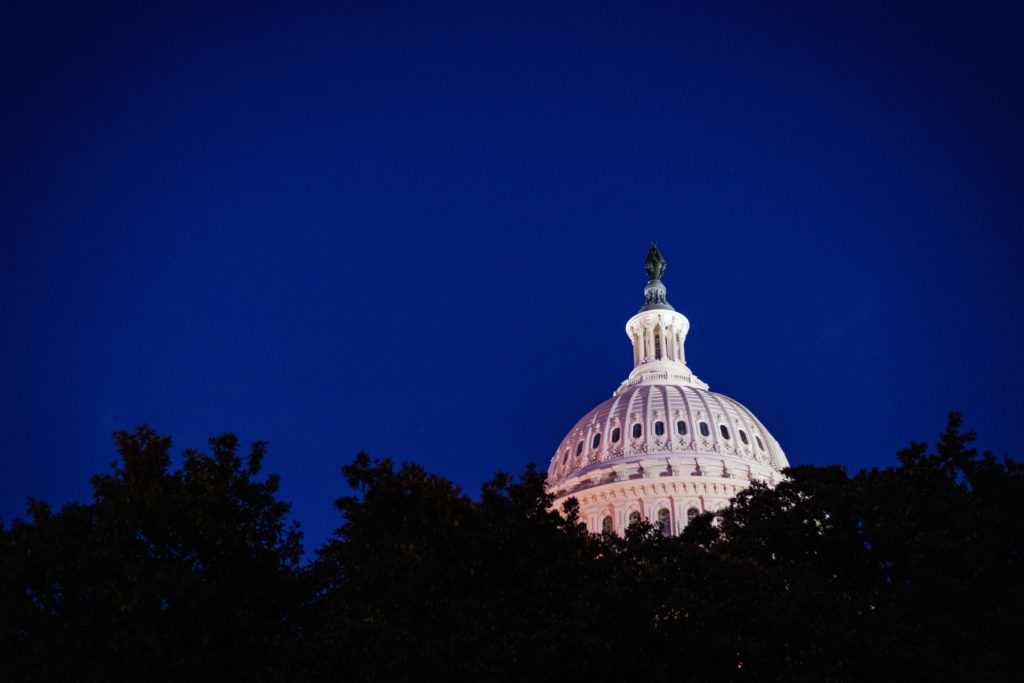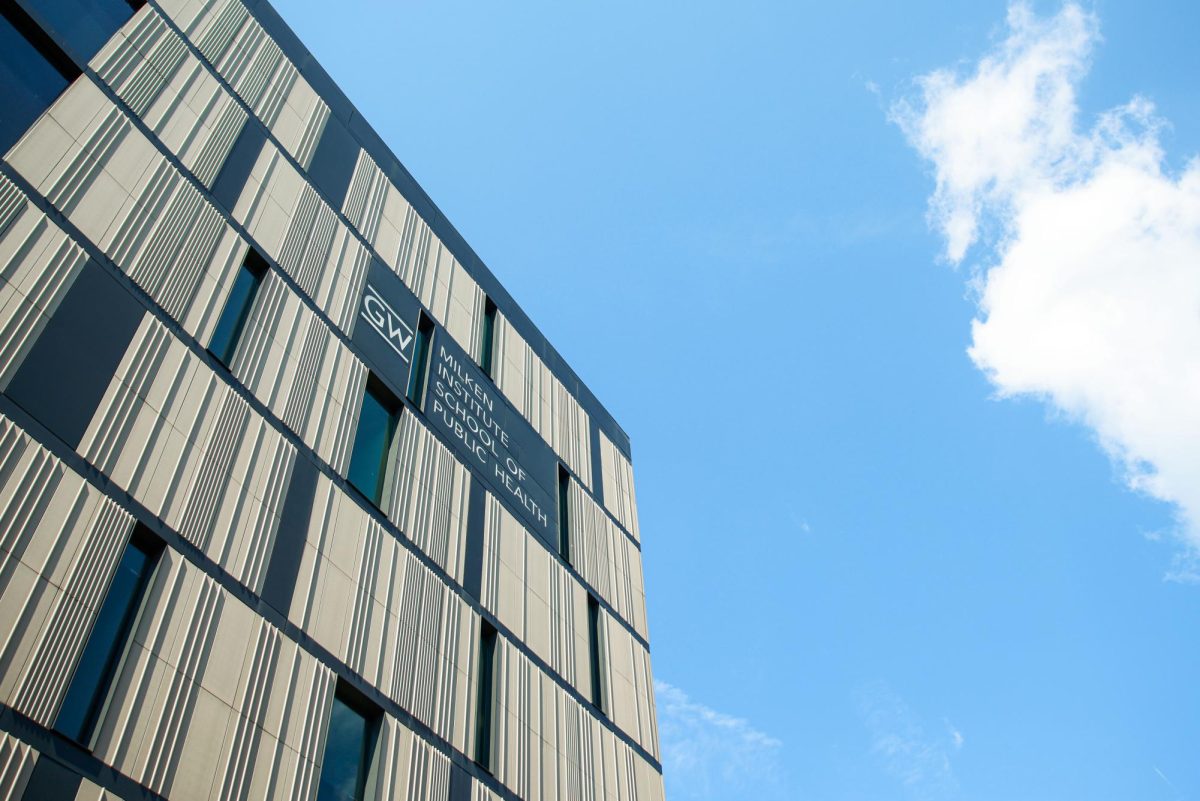Updated: Feb. 9, 2021 at 5:25 p.m.
Officials and faculty said GW’s internal expenditures on research initiatives increased by 12 percent during the past five years as its national rank for external funding continued a decline.
The National Science Foundation released its Fiscal Year 2020 Higher Education Research and Development survey in December, tracking and measuring how much a university annually spends and receives from federal agencies on research projects. Each university in the United States receives a number to signify the amount of money it spent in a fiscal year to develop research within all disciplines, according to the NSF’s website.
Interim Provost Chris Bracey said the University spent $66.5 million in institutional funds dedicated to research in fiscal year 2020 compared to $59.4 million in fiscal year 2016. The University ranked 86th out of 653 universities in the federally financed higher education research and development expenditures category and spent more than $157.5 million for all research fields in fiscal year 2020, according to the NSF’s website.
“There is no one-size-fits-all measure by which a university can measure its research output,” Bracey said in an email. “And universities cannot rely solely on the HERD survey because research funding is not equally available to all disciplines.”
Bracey said GW’s total support for the research is difficult to quantify because funding can include mediums like direct funding from federal agencies for projects and library resources.
He said the HERD rankings for fiscal year 2020 will not indicate the COVID-19 pandemic’s financial impact because its range from July 1, 2019 to June 30, 2020 only includes roughly four months of the pandemic.
Faculty members urged administrators during a Faculty Senate meeting last April to provide more research funding as the fiscal year 2022 budget failed to meet their funding requests while pushing forward other financial goals.
Bracey said while HERD rankings can be a useful metric to compare the University to similar institutions’ research activities, they cannot measure the “impact” of GW’s research output that can come in the form of grants, faculty-published books and policy advising.
“The ranking by expenditures from all sources is not as useful for comparisons because institutions may use different ways of capturing and reporting their contributions and place varying levels of importance on this particular metric,” he said.
Pamela Norris, the vice provost for research, said she’s impressed by the University’s support for research during the pandemic because the “faculty-led research ecosystem review” elicited enhancements for researchers. She said she is confident the University is committed to combining research and academic missions in hopes of increasing research capacity and scholarly output.
Norris replaced interim research leader Carla Berg in November, becoming the University’s first permanent head of research since officials migrated to a decentralized pod model for research in August 2020.
“The GW community makes important contributions to society and the impact of our scholarly work is significant,” she said in an email. “I look forward to working with the community to enhance our collective impact.”
Dwayne Wright, an assistant professor of higher education administration, said faculty members felt reluctant toward the University’s efforts to become a premier research institution because they moved to the decentralized pod model while the permanent vice provost for research role remained empty. He said faculty wanted GW’s research leadership to provide them with support and resources to continue projects and studies affected by the pandemic.
Wright said GW could double its research expenditures and “theoretically” not move up in the rankings because other universities might have had more investments in research or lost a small amount of funding in the same fiscal year.
While the University was ranked at 94 in research spending after its expenditures increased by $570,000 to surpass $270 million in fiscal year 2020, the University of Hawaii, Manoa ranked higher at 91 even though its research funding fell from about $280 million in fiscal year 2019 to less than $276 million in fiscal year 2020, according to the NSF’s website.
“To be quite frank and honest, even if we had a vice president and we didn’t go to the shared services model, it’s still an uphill climb to climb in these rankings because what you do is only reflected in the rankings compared to either what other schools are doing or aren’t,” he said.
Joe Cordes, the chair of the Faculty Senate’s fiscal planning and budget committee and a professor of economics, public policy and public administration and international affairs, said multiple factors like changes in federal funding for research development can account for the University’s fall in the federally funded research and development expenditures category of the HERD rankings.
He said the drop is not an automatic guarantee that the University developed less research between fiscal years 2016 and 2020. He added that future rankings for fiscal years 2021 and 2022 will display the pandemic’s effect on universities’ research and output.
Cordes said universities will vary in the number of research projects they undertake at a given time, the amount of research centered on COVID-19 and the size of funding for projects impacted by the pandemic. Officials spent more than $200 million on research projects, including trials related to COVID-19 that were also supported by GW’s COVID-19 research fund.
Cordes said while administrative officials should be cognizant of the University’s HERD rankings in the case that it experiences a major drop in future fiscal years, they can only look ahead and try to attract more funding from institutions like the National Institutes of Health.
“At least in this area of more medical research, that is something I think the University wants to explore because the feeling is that it hasn’t done as much as it could have been doing,” he said. “That would definitely have an impact on these rankings because a lot of medical research comes with federal dollars.”
James Tielsch, the chair of the department of global health in the Milken Institute School of Public Health, said the University needs to regain the information technology staff and faculty who were laid off during the pandemic to provide research investigators with the services they need for successful projects and rebuild an efficient research administrative infrastructure.
“You want your faculty engaged in state of the art work that supports the teaching mission in addition to the research mission,” he said. “You want people who are teaching to be those that are actually making the contributions and knowledge as well, so I think it’s critical that we try to move in that direction.”
Eddie Herzig, Eduardo Rivas and Cristina Stassis contributed reporting.
This post has been updated to correct the following:
The Hatchet misinterpreted the NSF data on the University’s research funding and expenditures. The NSF website reports its numbers in thousands of dollars, but The Hatchet reported the same data in hundreds of dollars. All numerical values from the NSF data are now updated to reflect the correct amount. The Hatchet also misquoted a word from Norris. The correct quote is now reflected. We regret these errors.








